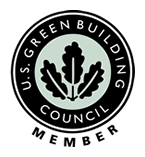 In the construction trade whether commercial or residential, luxury tropical resorts, corporate offices, or single family homes every one is seeing green. The green building movement is here to stay and is only gaining in popularity. The Green Building Council’s LEED certification program is adding certain legitimacy to these green construction efforts by awarding levels of certification (certified, silver, gold, platinum) based on the number of points your project earns. Using sustainable materials will earn you points but to qualify your lumber must be FSC® certified. No other certification programs are accepted which means that supplies are severely limited, delays ensue, and costs rise significantly. The net result is fewer builders are seeking the FSC credit and capturing points through other means. In essence, less certified lumber is used and the forestry industry puts less emphasis on carrying green products.
In the construction trade whether commercial or residential, luxury tropical resorts, corporate offices, or single family homes every one is seeing green. The green building movement is here to stay and is only gaining in popularity. The Green Building Council’s LEED certification program is adding certain legitimacy to these green construction efforts by awarding levels of certification (certified, silver, gold, platinum) based on the number of points your project earns. Using sustainable materials will earn you points but to qualify your lumber must be FSC® certified. No other certification programs are accepted which means that supplies are severely limited, delays ensue, and costs rise significantly. The net result is fewer builders are seeking the FSC credit and capturing points through other means. In essence, less certified lumber is used and the forestry industry puts less emphasis on carrying green products.
Currently only 1 point of the possible 110 awarded can be gained for LEED certification by using FSC wood products. When you think about recent doubling of certification costs for FSC lumber how can builders provide green homes with rising certification costs, limited supply, and the average homeowner not willing to pay more the a 5% premium for a green home?
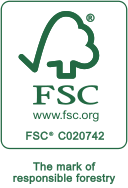 Lumber, certified or not is still a major requirement for construction so builders are being forced to skip using sustainable materials and earn their LEED points by other methods. With 109 other points to get, it is not difficult to obtain a platinum rating while skipping FSC lumber altogether. This results in all kinds of lumber being used and the FSC certified sits on lumber yards unused losing value while it weathers. This depreciation is similar to forest land that goes unused due to export bans and when value cannot be derived from the lumber eventually people stop buying it in the first place and the forest land may go unmanaged. Many critics claim that by severely limiting the lumber that qualifies for LEED is causing more harm than good. If LEED were expanded to include other certification programs like SFI or establish a general criteria that lumber must meet to qualify instead of tying it to a single program, more builders would be able to get the material they need and more green lumber would be used in the long run. Others state that by lowering the bar and allowing other, less stringent certification schemes to qualify will only hurt the forests in the long run.
Lumber, certified or not is still a major requirement for construction so builders are being forced to skip using sustainable materials and earn their LEED points by other methods. With 109 other points to get, it is not difficult to obtain a platinum rating while skipping FSC lumber altogether. This results in all kinds of lumber being used and the FSC certified sits on lumber yards unused losing value while it weathers. This depreciation is similar to forest land that goes unused due to export bans and when value cannot be derived from the lumber eventually people stop buying it in the first place and the forest land may go unmanaged. Many critics claim that by severely limiting the lumber that qualifies for LEED is causing more harm than good. If LEED were expanded to include other certification programs like SFI or establish a general criteria that lumber must meet to qualify instead of tying it to a single program, more builders would be able to get the material they need and more green lumber would be used in the long run. Others state that by lowering the bar and allowing other, less stringent certification schemes to qualify will only hurt the forests in the long run.
Regardless of the situation, the consumer likes the idea of FSC lumber used in their green buildings. While the other efforts yield a green building they are less tangible than the wood used as siding, flooring, and trim. The near impossibility of finding a consistent supply of FSC lumber remains but builders can find alternate green lumber. It will have documentation and provenance that shows it’s sustainability and while it won’t qualify for LEED points, the buyer can be assured of the environmental responsibility of the product. This will satisfy the majority of the consumers and the LEED rating will still be the same.
These are conversations we have every day with builders and architects who call us looking for green products and more often than not we are able to find a product that is green even though it may not be an FSC certified product. As we have stated before, the lumber industry has one of the strongest motives for sustainable forestry and we want to see the continued growth of green building thrive. The future is unclear but the Green Building Council continues to get pressure to admit non FSC wood products. Whether they choose to allow it or not shouldn’t matter since the point values are so low right now.

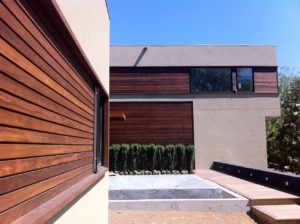
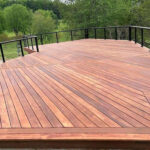
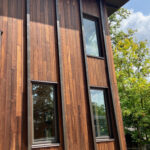
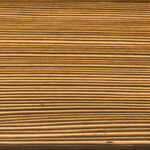
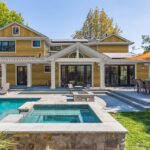
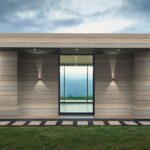
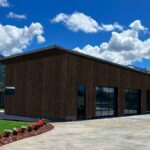


Leave a Reply